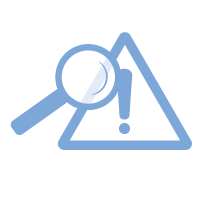Revolutionary changes, both in the extent and nature of the drugs problem, and in the world in which we live, have called for constant reflection, innovation and agility to keep pace with new developments and rethink existing routines. This is why the EMCDDA has adopted a multi-indicator approach to monitoring in its response to a fast-moving drugs problem.
This month, to mark the EMCDDA’s 25 years of monitoring milestone, we look at how the agency has strengthened and expanded its monitoring tools, on the premise that no single measure can provide a full picture of the drug situation. By complementing data routinely submitted by Member States with information from an expanding range of leading-edge sources (see Figure), the agency can now respond with more timely and rounded analyses to inform drug policies and practice in the years to come.
From early-warnings and public health alerts on new drugs, to risk assessments of drug-related infectious disease outbreaks or drug market threats, these innovative methods boost the agency’s preparedness and response. Analyses of data from wastewater studies, hospital emergency departments, web surveys and drug-checking services enhance understanding of drug use and markets in Europe and can provide valuable information for local interventions. The monitoring of darknet markets and open source information may also help identify emerging trends and threats, while trendspotter studies bring together multiple sources for rapid assessments of topics of concern. While these methods have their limitations, they can improve awareness of patterns of drug use and sub-populations of users that are less well-observed.
Over the past month, COVID-19 has put the EMCDDA’s responsiveness to the test, both in terms of business continuity and monitoring the drug phenomenon in unprecedented times. Using an array of methods — including a web survey and darknet monitoring — the agency has acted quickly and proactively to publish a range of new resources exploring the risks faced by people who use drugs, drug market changes and how drug professionals working with this group may need to adapt on the frontline.
The EMCDDA will continue to monitor and report on the evolving pandemic. A joined-up response, involving a broad range of monitoring tools, will help contribute to a healthier and more secure Europe.
Figure: EMCDDA preparedness and response
Over the past quarter of a century, the EMCDDA has expanded its monitoring capability to keep pace with revolutionary changes in the extent and nature of the drugs problem and in the world in which we live. By complementing data routinely submitted by Member States with information from an expanding range of leading-edge sources shown below, the agency can now respond with more timely and rounded analyses to inform drug policies and practice in the years to come.


EU Early Warning System (1997): A mechanism for the rapid detection and exchange of information on new psychoactive substances (NPS), preceding and informing risk assessments and responses to the health and social threats of these drugs.

Public health alerts (2004): Risk communications issued by the EMCDDA to the EU Early Warning System network as alerts on NPS. These help with preparedness planning and response activities at national and EU level.

Internet snapshots (2006): Rapid assessments of the marketing and online availability of NPS to users, undertaken during a limited time window. This pioneering method (now discontinued) allowed for repeated cross-sectional samples, highlighting emerging trends.

Wastewater analysis (2007): A scientific discipline used to provide almost real-time, population-level data on illicit drug use in Europe. It offers valuable insights into drug use and behavioural changes in key cities, geographically and over time.

Trendspotter methodology (2011): A methodology used to explore emerging trends, new patterns of use and drug market changes. It involves rapidly collecting and triangulating data from a variety of sources.

Risk assessments on outbreaks of infectious diseases (2011): Joint ECDC–EMCDDA risk assessments involving drug-related infectious disease experts. These help countries affected by, or at risk of, outbreaks to improve their prevention capacity and reduce incidence.

Hospital emergency data analysis (2013): Analysis of data from emergency departments in a network of sentinel hospitals in cities across Europe. This provides unique insights into drug-related toxicity, acute health harms and new patterns of use and helps pinpoint sub-populations of drug users.

Threat assessments (2014): Exercises to assess emerging drug-related health and security threats to inform and support decision-making at national and European level. They can take the form of reports or briefings (but are not always publicly available).

Darknet monitoring (2016): The monitoring of drug-related activity on darknet markets (‘cryptomarkets’). This explores how they function, the threats they pose to health and security and the implications they have for drug control policies and law enforcement activities.

Web surveys (2016): Tools which can collect information quickly and cheaply on topics currently not covered by routine methods, such as general population surveys. The European Web Survey on Drugs aims to improve understanding of patterns of drug use and drug market changes in Europe.

Cannabis policy alerts (2016): An electronic alert service offering objective information on cannabis policy developments, such as major policy decisions or key reports.

Open source information monitoring (2016): The monitoring of information from publicly available sources to reinforce existing knowledge and fill information gaps. The EMCDDA has used OSI to monitor health threats from NPS, complement data on drug markets and keep track of international changes in cannabis policy.

Syringe residue studies (2017): An approach which gathers information on the substances used by people who inject drugs, by chemically analysing the residual content of used syringes. It provides local and timely information that can be used for city-level monitoring and intervention.

Drug-checking services data analysis (2018): Analysis of data from drug-checking services across Europe. This provides valuable insights into drug market dynamics at user level and can warn users of dangerous substances on the market.


















